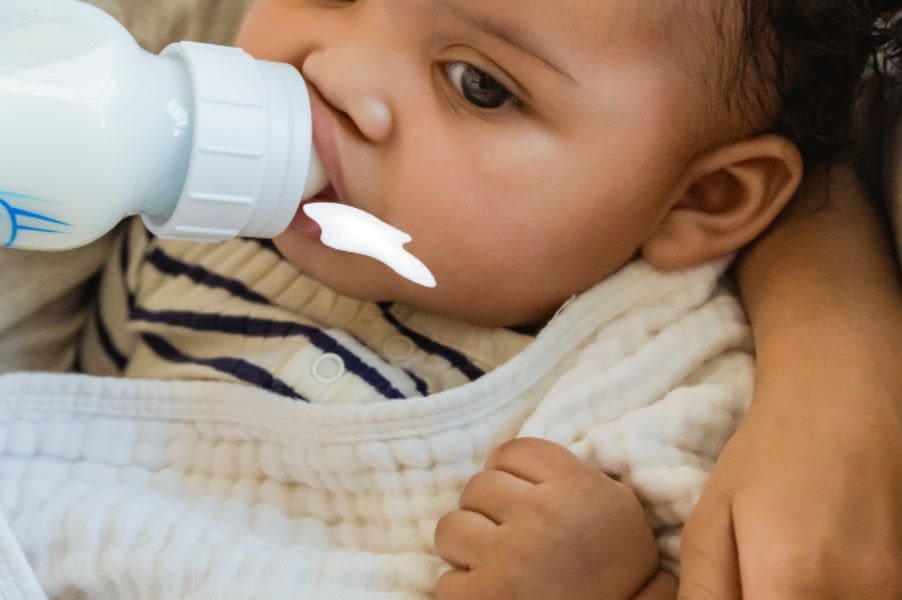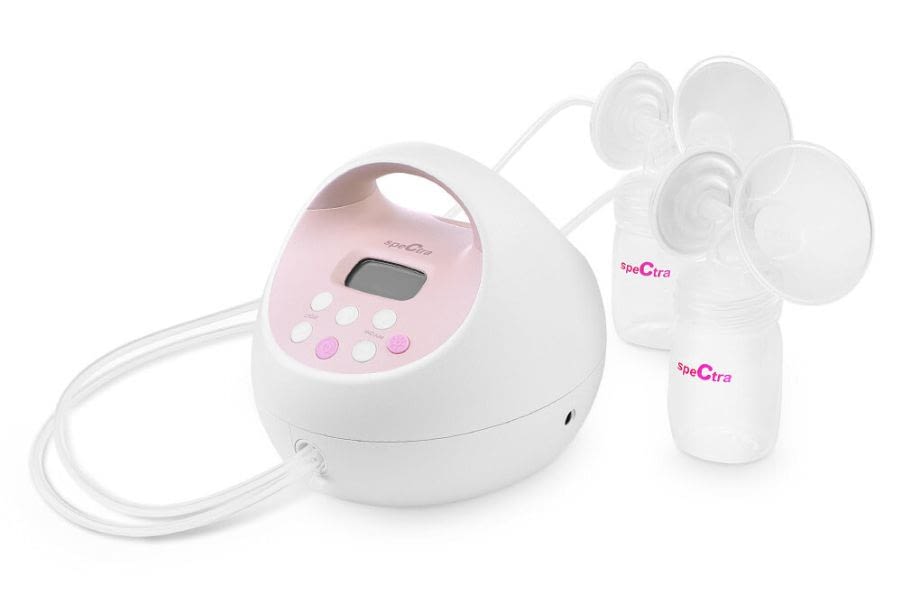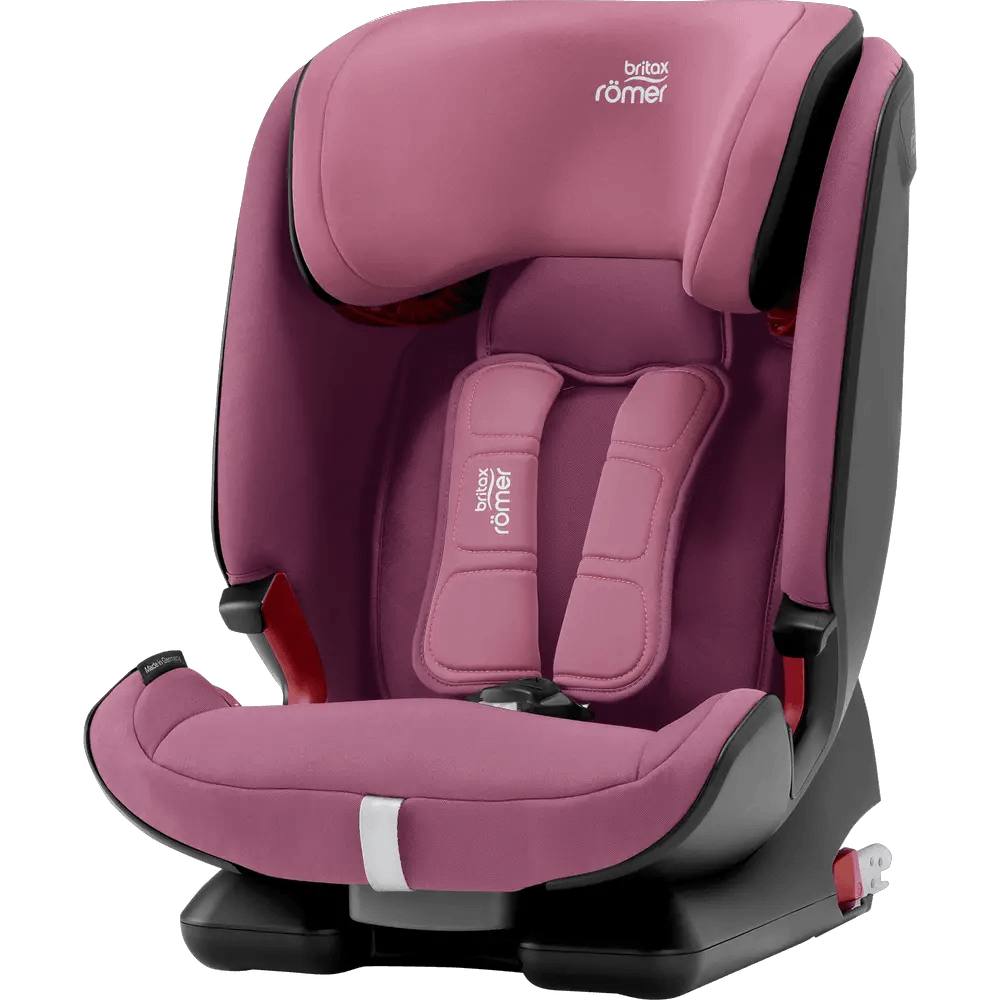Parents, it’s a common sight in toddler-aged children––the beloved sippy cup. From the time they become mobile, your precious ones are seen carrying their brightly adorned milk or juice containers wherever they go. But did you know that those very same companionable cups could be the cause of dental problems down the road?
In this blog post, I’ll investigate why do sippy cups cause teeth problems. And, if so, then what solutions can parents use to help protect their children’s teeth while using hard top sippy cups?
Studies have shown that prolonged use of sippy cups can cause numerous dental problems for children, such as tooth decay and misalignment.
Why do sippy cups cause teeth problems?
Sippy cups are a transitional tool that helps toddlers move from bottles or breastfeeding to regular cups. They’re convenient for on-the-go use, less messy, and can help children develop their motor skills.
However, they can hurt your child’s dental health if misused. The primary concern stems from these cups allowing liquids to pool around and stay in contact with a child’s teeth for extended periods, especially when sipping is frequent or when the child can carry the cup around throughout the day.
So, Why are sippy cups bad? Constant exposure to liquids – particularly sweet or acidic ones like juice or milk – can accelerate tooth decay, leading to what dentists call “bottle rot”. However, it’s crucial to note that it’s not the sippy cup itself that’s bad; instead, its inappropriate or prolonged use poses potential problems.
If used beyond the recommended age, they may impede speech development and lead to incorrect swallowing patterns. It’s essential for parents to carefully monitor their child’s use of sippy cups and follow best practices to ensure their child’s health and development are not negatively impacted.
What kind of sippy cup is best for teeth?
The cup with a straw is the dentist recommended sippy cup when it comes to the best kind of sippy cup for teeth. Unlike traditional sippy cups, straw cups require children to use a sucking action similar to drinking from a regular cup, which is less likely to cause liquid to pool around the teeth. It reduces the risk of tooth decay.
Moreover, when choosing a cup, opt for bite proof sippy cups that are spill-proof and easy to clean to maintain good oral hygiene. Remember, it’s not just the type of cup that matters but also what’s in it. Always fill the cup with water or milk rather than sugary beverages to further protect your child’s teeth.
Identifying Various Types of Sippy Cups and Their Dental Effects
There are several types of sippy cups, each having different dental effects on children:
- Spouted Sippy Cups: These are the most common cups equipped with a hard spout. While they help prevent spills, their prolonged use can lead to tooth decay, as the spout directs liquid towards a specific area of the child’s teeth. Moreover, hard top sippy cups can affect a child’s oral motor development, as they do not encourage the natural movement of the tongue and lips required for speech.
- Spoutless Sippy Cups: Also known as “360-degree” cups, they allow children to drink from their rim, much like a regular cup. They are better for oral motor development as they encourage natural lip and tongue movements. However, this sippy cup without spout can still contribute to tooth decay if used with sugary beverages.
- Straw Sippy Cups: These cups incorporate a straw rather than a spout. They are considered better for children’s dental health as the liquid does not pool around the teeth, reducing the risk of tooth decay. Furthermore, they promote healthier oral motor development, as drinking from a straw requires more complex muscle movements.
- Transition Sippy Cups: These cups come with handles and a lid without a spout or straw. They are excellent for transitioning from a bottle to a regular cup and encourage natural drinking habits, similar to a regular cup, thus promoting oral health.
Things to consider: Can sippy cups mess up teeth?
Sippy cups, while convenient for preventing spills, but prolonged use can pose several potential dangers. During the initial stages of transitioning from bottle-feeding, they can be helpful. Ensuring they are phased out appropriately is crucial to prevent potential developmental issues.
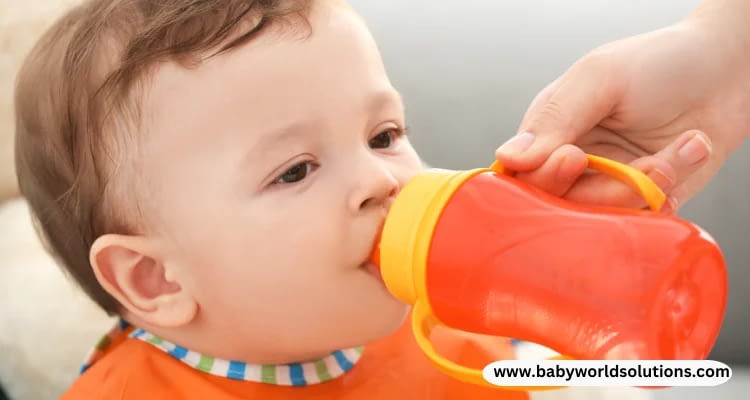
Significant Development Changes From Prolonged Use of a Sippy Cup
Extended usage of sippy cups can lead to several developmental changes in children:
- Primarily, it may delay the transition to regular cups, an essential milestone in a child’s ability to self-feed. This delay can, in turn, impact the development of fine motor skills from handling a cup and drinking unaided.
- From a speech and language perspective, the prolonged use of sippy cups can alter a child’s tongue placement, leading to the development of an incorrect swallowing pattern known as ‘tongue thrust’.
- Furthermore, a child’s oral development can be negatively impacted by the constant sucking motion associated with sippy cups, potentially leading to the misalignment of teeth or an improper bite.
Common dental problems caused by sippy cups
Tooth Decay
Sippy cups are often associated with tooth decay, the most common dental problem related to their use. This issue arises when a child sips on sugary drinks throughout the day, allowing sugar to coat their teeth continuously. When bacteria in the mouth consume this sugar, they produce an acid that erodes tooth enamel, leading to cavities.
Bacteria growth on sippy cups
If sippy cups are not cleaned properly, bacteria can grow and multiply on the cup’s surfaces. When children drink from this cup, they consume those harmful germs, potentially leading to infections or oral health issues. This is why regular cleaning and hygiene practices are essential for sippy cups.
Misaligned Teeth
Prolonged use of sippy cups can also lead to misaligned teeth. This is because the spout of the cup exerts pressure on the developing teeth and jaw, affecting their positioning and formation. It might lead to orthodontic treatment in the future.
Delayed Speech Development
Bite proof sippy cups might also affect a child’s speech development. The sucking action used when drinking from a sippy cup is different from the tongue and lip movements used during speech. Extended use of the cup can thus hinder the development of these critical speech-related skills.
Poor Eating Habits
Relying on filled sippy cups can encourage poor eating habits in children. Kids might be less likely to feel hungry and eat solid foods when they can easily consume calories from milk or juice in sippy cups throughout the day.
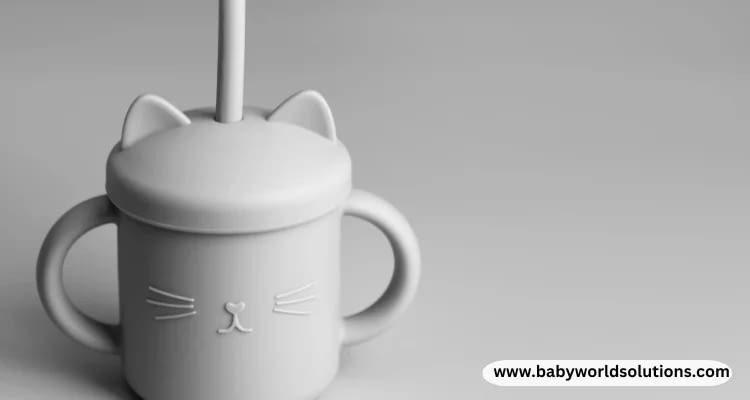
When should kids stop using sippy cups?
The ideal time to start transitioning your child from a sippy cup to a regular or straw cup is typically around their first birthday. However, the age at which a child is ready can vary.
The American Academy of Pediatrics recommends that parents aim to have their children transitioned off sippy cups by 2 to 3 years old. Following this can help prevent the potential dental and health issues associated with prolonged sippy cup use.
How do you prevent sippy cup-related dental issues?
Preventing sippy cup-related dental issues starts with regulating what goes into the cup and how often your child uses it. Here are some steps you can follow:
- Limit Sugary Drinks: Avoid filling the sippy cup with sugary drinks like juice or soda. These can result in tooth decay if the sugar is allowed to sit on your child’s teeth for extended periods. Instead, opt for water or milk, which are healthier alternatives.
- Set Specific Drinking Times: Rather than allowing your child to sip from the cup all day, establish specific drinking times, mainly during meals. This practice helps limit their teeth’ exposure to potentially harmful sugars and acids, avoiding nighttime sippy cup.
- Transition to Regular Cups: Start introducing regular cups as soon as your child is ready, ideally by their first birthday. Regular cups do not promote the pooling of liquids around the teeth like sippy cups do, significantly reducing the risk of tooth decay.
- Regular Dental Check-Ups: Regular dental check-ups can help detect and address any dental issues early on. You should take your child for their first dental visit by their first birthday and maintain regular check-ups afterwards.
- Good Oral Hygiene Practices: Teach your child the importance of brushing their teeth twice daily after consuming sugary drinks.
Tips for transitioning from a sippy cup to a straw cup or regular cup
Parents and children face a learning curve when transitioning from a sippy cup to a straw or regular cup. Below are some tips that could ease this process:
- Instead of a sudden change, opt for a gradual transition. Start by introducing the new cup during meals or when your child is in a good mood.
- Children often learn by imitation. Show your child how to drink from a regular or straw cup and encourage them to do the same.
- Choosing cups with your child’s favourite color or cartoon character can make the new cup more appealing and motivate them to switch.
- Praise and reward your child’s attempts to drink from the new cup. This positive reinforcement can boost their confidence and interest in using the new cup.
- Every child is unique and will transition at their own pace. It’s essential to be patient and not to force the transition.
- Water is the best drink option for your child’s oral and overall health. Please encourage your child to drink water regularly by always keeping a bottle within reach.
- Teach your child about the health effects of different drinks. Emphasize that drinks like water and milk are beneficial, while sugary beverages can harm their teeth and overall health.
- Enforce consistent rules about when and what your child can drink. For instance, save sugary drinks for special occasions only.
What to Use Instead of a Sippy Cup?
If you are wondering what to use instead of sippy cup, then below are the best alternatives for your little one.
- Regular Cups: As soon as your child is ready, you can introduce them to standard cups. Start with small, unbreakable ones that are easy for little hands to hold.
- Straw Cups: A great alternative to sippy cups, straw cups encourage healthy oral motor development and reduce the risk of tooth decay.
- 360-Degree Cups: These cups are designed to be spill-proof and allow your child to drink from any edge of the cup, much like a regular cup. They are great for transitioning kids to regular cups.
- Open Cups: Small open cups are available in the markets specifically designed for toddlers. They are excellent for mealtime use and can help your child learn to sip rather than suck.
- Sports Bottles: These bottles come with a pop-up straw and are generally larger, making them suitable for older toddlers and use during outdoor activities.
Does Drinking From a Bottle Cause Tooth Decay?
Much like sippy cups, prolonged bottle use, especially when filled with sugary drinks, can lead to tooth decay in children. This phenomenon, known as baby bottle tooth decay, happens when a child’s teeth are frequently exposed to drinks that contain sugar, like milk, formula, or juice.
The sugar in these beverages interacts with bacteria in the mouth to form the acid that attacks the tooth enamel, causing decay. This risk is incredibly high if the child goes to bed with a bottle. Regular cleaning of your child’s teeth, limiting the sugar intake, and transitioning to a cup at the right age can prevent baby bottle tooth decay.
Conclusion: Do sippy cups cause teeth problems?
As parents, we always try to ensure our kids have the healthiest life they can. But when it comes to sippy cups—are we doing them more harm than good?
While sippy cups can be helpful during a particular stage of a child’s development, their prolonged use can lead to several dental and health issues. Therefore, parents must monitor their use and transition their children to regular cups at the appropriate age.
1 Visit today



